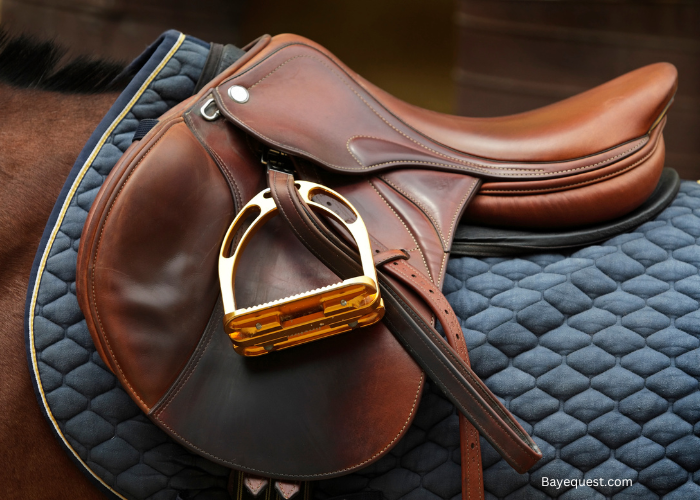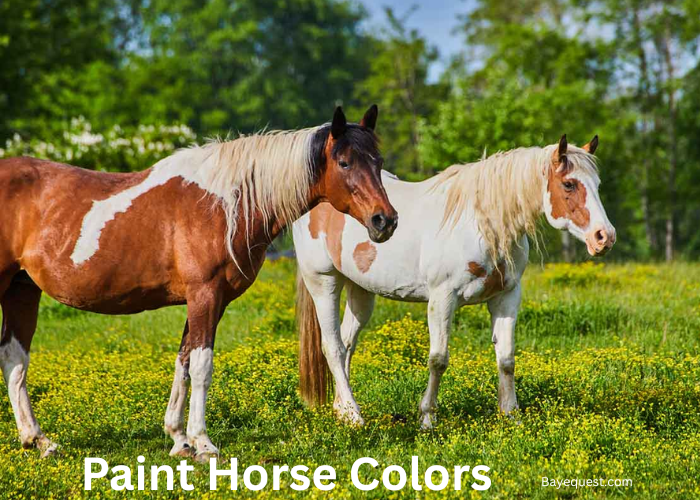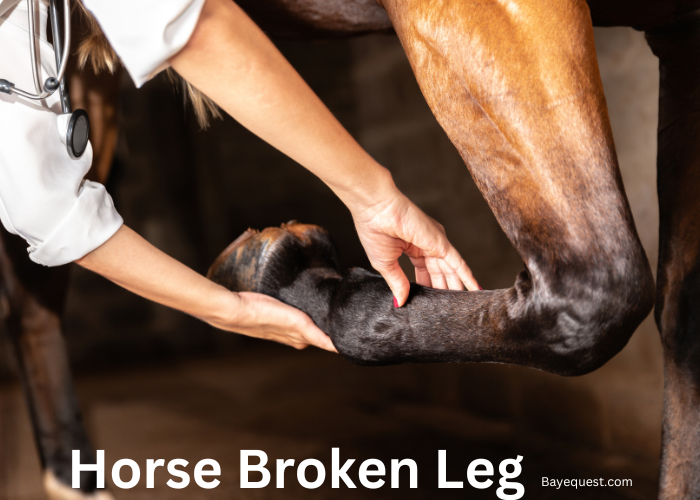A good saddle fit makes all the difference. Get it wrong, and you’ll feel it with every step, bump, and turn.
Your horse will feel it too, and they won’t be shy about letting you know. Measuring a saddle sounds tricky, but it’s easier than you think.
With a few simple tools and the right steps, you’ll have it done in minutes. No guesswork. No surprises.
Let’s walk through exactly how to measure a saddle the right way.
How to Measure a Saddle: Key Takeaway
To measure a saddle, check the seat size, gullet width, and flap dimensions. Use a flexible tape and measure straight across key points. Proper measurements ensure a comfortable, balanced fit for both horse and rider. Always double-check for accuracy before buying or adjusting a saddle.
Types of Saddles
Choosing the right saddle depends on what you and your horse plan to do. From working cattle to jumping fences, each saddle is built with a purpose in mind.
Let’s take a closer look at the main types of saddles you’ll find.
English saddle
If you’re riding in a competition, you’re likely sitting in an English saddle. It’s lightweight, sleek, and built to help you feel every move your horse makes.
Perfect for jumping, dressage, or general flatwork, this design gives riders more freedom and balance.
Western saddle
Built for ranch life and long days on horseback, the Western saddle is all about comfort and security.
It comes with a deep seat, a broad pommel, and a horn up front, originally made for roping cattle.
Today, it’s still a favorite for trail rides, rodeos, and working horses.
Dressage saddle
For riders who focus on precision and posture, the dressage saddle is the ultimate choice.
It features a deeper seat and longer, straighter flaps that encourage a tall, balanced position.
Every detail is designed to support harmony between horse and rider during graceful, controlled movements.
Jumping saddle
When jumps and fast turns are on the agenda, a jumping saddle steps in.
It has a flatter seat and forward-cut flaps, making it easier to lean forward and stay centered over fences.
This saddle is made for speed, balance, and quick thinking on the course.
Endurance saddle
Long rides call for serious comfort, and that’s where the endurance saddle shines.
It’s lightweight yet supportive, designed to reduce pressure points and minimize fatigue over many miles.
Perfect for trail riders and endurance racers who cover serious ground.
Australian stock saddle
Mixing the best of English and Western styles, the Australian stock saddle is built for tough riding.
It offers a deep seat, thigh pads for extra grip, and sometimes even a small horn. This saddle is ideal for riders handling rough trails, tricky terrain, or livestock work.
Treeless saddle
Some riders prefer the close-contact feel of a treeless saddle. Without a solid internal frame, it’s more flexible and allows the horse to move freely.
However, careful fitting is crucial to avoid pressure points and discomfort for the horse.
Side saddle
A nod to tradition, the side saddle offers a graceful and historic way to ride. Both legs rest on one side of the horse, a style once necessary for women riding in skirts.
Today, it’s seen mostly in shows and exhibitions, but still demands impressive balance and skill.
Racing saddle
Speed is everything in racing, and the saddle reflects that. Racing saddles are tiny, ultra-light, and designed to let the horse move without extra weight holding it back.
Jockeys use them to stay low, light, and fast on the track.
The Basics of Saddle Measurements
Before you grab a measuring tape, you need to know what you’re actually measuring.
Saddle measurements aren’t just about the seat size. They also cover key areas that affect fit, balance, and comfort for both you and your horse.
The most important measurement is the seat size. This tells you how much room you’ll have to sit comfortably.
A seat that’s too small can make you feel cramped, while one that’s too large can leave you sliding around. Measuring the seat helps match the saddle to your body size and riding style.
Next, you’ll want to check the gullet width. The gullet is the channel underneath the saddle that clears your horse’s spine.
If it’s too narrow, it can pinch and cause soreness. Too wide, and the saddle might sit unevenly.
Getting this right is crucial for your horse’s comfort and back health.
Flap length and flap width are also important, especially for English saddles. These measurements help make sure your leg position matches the saddle’s design.
Riders with longer legs, for example, often need longer flaps to stay balanced and secure.
Some riders and fitters also look at the tree width, the internal frame of the saddle. While this measurement is a bit trickier without special tools, it plays a big role in how well the saddle fits across your horse’s shoulders.
Getting these basics right can save you from a lot of discomfort, poor rides, and unhappy horses.
The good news? Measuring a saddle isn’t hard once you know what to focus on. A little effort now can make a huge difference every time you ride.
Tools and Equipment Needed for Measuring a Saddle
Straight ruler
Saddle stand or flat surface
Notebook and pen
Camera or smartphone (optional)
Helper
Straight ruler
How to Measure Saddle Seat Size (Step by Step Guide)
Getting the seat size right is one of the most important parts of measuring a saddle. Here’s a simple step-by-step guide to help you do it correctly.
Step 1: Place the saddle on a flat surface
Set the saddle on a saddle stand or a sturdy, level surface. This will keep it steady and ensure that your measurements are accurate.
Step 2: Find the saddle nail or button
Look for the small metal nail or button near the base of the pommel (the front of the saddle). This is your starting point.
Step 3: Locate the center of the cantle
The cantle is the curved back part of the saddle where your seat rests. You’ll be measuring to the very center of it, not the edge.
Step 4: Measure in a straight line
Using a flexible measuring tape or straight ruler, measure from the saddle nail to the middle of the cantle. Keep the tape straight, following the shape of the seat, but don’t curve it around.
Step 5: Record the measurement
Write down the distance in inches. Most English saddles are measured in half-inch increments (like 16.5″, 17″, 17.5″). Western saddles usually range in full inches.
Step 6: Double-check your measurement
Measure a second time for accuracy. If the tape shifts even slightly, you can be off by a small amount.
How to Measure Saddle Width
Saddle width is all about how the saddle fits across your horse’s shoulders. A width that’s too narrow can pinch and cause pain.
Too wide, and the saddle will slide around and sit too low on the withers. Getting this measurement right is key to your horse’s comfort and performance.
Step-by-Step Guide to Measuring a Saddle Width
Start by placing the saddle on a stand or a level surface. Stand in front of the saddle and look under the pommel, right where it would sit across the horse’s shoulders.
You’ll notice the front of the saddle forming a sort of “arch”. This is where you measure.
Using a ruler or flexible tape, measure the distance between the points of the saddle tree (located just under the front of the saddle panels). You’re measuring the inside width, not the outside edges.
In most cases, saddle widths aren’t given in exact inches or centimeters. Instead, they are categorized using terms like Medium (M), Medium Wide (MW), Wide (W), and so on.
Saddle Width: MEDIUM (M)
A medium-width saddle fits horses with average shoulder width and withers. It’s the most common size for many breeds, especially sport horses and general riding horses.
If your horse is neither especially broad nor narrow, chances are a Medium width will fit well.
Saddle Width: MEDIUM WIDE (MW)
A Medium Wide saddle is slightly wider than a standard Medium. It’s made for horses that are broader through the shoulders but not wide enough to need a full Wide saddle.
This size is common for horses with a bit more muscle or broader conformation, like some Warmbloods or stockier Thoroughbreds.

How to Measure the Gullet Size of a Saddle
The gullet of a saddle is the tunnel that runs underneath the saddle, from front to back. It’s important because it protects your horse’s spine and ensures the saddle sits evenly on both sides.
A gullet that’s too narrow or too wide can cause real discomfort and even injury over time.
Here’s how to measure it correctly.
Step 1: Place the saddle on a stand or flat surface
Make sure the saddle is upright and steady. This gives you a true reading of the gullet without any shifting or tilting.
Step 2: Locate the front of the gullet
Look under the pommel at the very front of the saddle. This is where you’ll measure the gullet width, not further back along the saddle.
Step 3: Measure between the saddle points
Use a straight ruler or a flexible measuring tape. Measure from the inside edge of one saddle panel across to the inside edge of the other panel.
Make sure you’re measuring straight across at the front, not on a slant.
Step 4: Record the measurement
Most English saddles will have a gullet width ranging between 4 to 6 inches. Western saddles can vary even more depending on the style and fit.
Write down the measurement so you can match it properly to your horse’s conformation.
Why Does the Gullet Size Matter?
The gullet might seem like a small part of the saddle, but it plays a huge role in your horse’s comfort.
It’s not just about fit. It’s about protecting your horse’s spine and shoulders every time you ride.
A properly sized gullet creates a clear channel along the horse’s back, keeping pressure off the sensitive spine and withers.
If the gullet is too narrow, it can pinch the withers, rub against the spine, and cause serious pain or even injury over time.
You might notice your horse acting sore, refusing to move forward, or showing signs of discomfort under saddle.
On the other hand, a gullet that’s too wide isn’t good either. It can cause the saddle to sit too low, press unevenly on the back, and shift during movement.
This can throw off your balance, make riding uncomfortable, and again, leave your horse sore or even lame.
When the gullet fits correctly, your saddle stays balanced. Your weight is spread evenly across the horse’s muscles, not crushing the spine.
This gives you a smoother ride and keeps your horse happy, healthy, and willing to perform.
In short, the right gullet size isn’t just about fit, it’s about safety, comfort, and the long-term health of your horse.
What Adjustable Gullet Bar Width Does Your Horse Need?
When adjusting a saddle’s gullet, knowing the actual width measurements can make all the difference.
While terms like Medium or Wide are helpful, real numbers give you a much better idea of what your horse needs.
Here’s a general guide to adjustable gullet widths:
Narrow (N)
- Width: Around 4 to 4.5 inches (10 to 11.5 cm)
- Best for very slim horses with high withers, such as Thoroughbreds or finer-built Warmbloods.
Medium (M)
- Width: Around 4.75 to 5 inches (12 to 12.7 cm)
- Fits horses with an average build and moderate withers. Many sport horses, light Warmbloods, and general-purpose horses.
Medium Wide (MW)
- Width: Around 5.25 inches (13.3 cm)
- Suits horses that are slightly broader through the shoulders but not wide enough to need a full Wide saddle, often found in stockier Warmbloods, Quarter Horses, and Cobs.
Wide (W)
- Width: Around 5.5 inches (14 cm)
- Designed for broader horses with a flat back or well-developed shoulders, like heavy Warmbloods, large Quarter Horses, and some draft crosses.
Extra Wide (XW)
- Width: Around 5.75 to 6 inches or more (14.6 to 15+ cm)
- Needed for very broad, heavy-set horses like purebred Draft horses, heavy Cob types, and some wide, mature Warmbloods.
Measuring Saddle Flap Length and Width
Measuring the saddle flap helps ensure the saddle matches your leg position and riding style.
To measure the flap length, start at the stirrup bar and run a tape straight down to the bottom of the flap.
For flap width, measure across the widest part of the flap, usually halfway down. Shorter riders often need shorter flaps, while taller riders or jumpers may prefer longer, forward-cut flaps.
Typical flap lengths range from 13 to 17 inches, while widths vary from 12 to 16 inches. Getting these measurements right improves comfort, balance, and overall riding performance.
Quick Tips for Accurate Measuring
Always place the saddle on a flat, stable surface.
Use a flexible tape for curves and a straight ruler for flat lines.
Measure from the correct points.
Keep the tape straight, not wrapped around curves.
Double-check each measurement to be sure.
Write down measurements right away to avoid confusion.
Take clear photos if you plan to sell or compare saddles.
When in doubt, measure twice before making a decision.
Check the manufacturer’s sizing charts if available. Brands can vary slightly.
If possible, have a helper steady the saddle while you measure.
Saddle Length, Saddle Size, and Seat Size Comparison Chart
| Saddle Size (Label) | Seat Size (Inches) | Approximate Saddle Length (Inches) | Best for |
| 14″ | 14” | 20″ to 22″ | Small children, very petite riders |
| 15” | 15” | 21″ to 23″ | Youth riders, small adults |
| 16” | 16” | 22″ to 24″ | Average-sized adults |
| 16.5” | 16.5” | 23″ to 25″ | Adults needing a slightly bigger seat |
| 17” | 17” | 23.5″ to 25.5″ | Most average to taller adults |
| 17.5” | 17.5” | 24″ to 26″ | Taller adults, longer legs |
| 18” | 18” | 25″ to 27″ | Very tall riders or those needing extra room |
| 18.5” | 18.5” | 26″ to 28″ | Extra tall riders or large build |
Conclusion
Measuring a saddle doesn’t have to be complicated. With the right tools and a little patience, you can get accurate results every time.
Checking the seat, gullet, and flap size ensures a better fit for both you and your horse.
A well-fitted saddle improves comfort, balance, and performance. It also helps prevent soreness and injuries.
Take your time, measure carefully, and double-check your work. If you’re ever unsure, ask a professional saddle fitter for help.
Getting it right makes every ride better for you and your horse.







